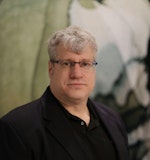Chevron starts waterflood project to boost Gulf of Mexico production
Chevron Corp. started water injection to boost oil and natural gas recovery at Jack-St. Malo and Tahiti deepwater projects in the US Gulf of Mexico.
“Delivery of these two projects maximizes returns from our existing resource base and contributes toward growing our production to 300,000 net barrels of oil equivalent per day in the US Gulf of Mexico by 2026,” said Bruce Niemeyer, president, Chevron Americas Exploration & Production, in a release Sept. 3.
The Jack-St. Malo floating production unit sits about 280 miles south of New Orleans in about 7,000 ft of water. Water injection at St. Malo field is the company’s first waterflood project in the deepwater Wilcox trend (OGJ Online, Sept. 19, 2019). The project includes the addition of water injection facilities, two new production wells, and two new injection wells. It is expected to add about 175 MMboe to St. Malo field’s gross ultimate recovery. Since the fields started production in 2014, Jack and St. Malo together have cumulatively produced almost 400 MMboe (OGJ Online, Dec. 2, 2014).
Tahiti spar, about 190 miles south of New Orleans in 4,100 ft of water, started injecting water into its first deepwater Gulf producer-to-injector conversion wells. The project included installation of a new water injection manifold and 20,000 ft of flexible water injection flowline. Bolstered by multiple development projects since the start of operations in 2009, Tahiti recently surpassed 500 MMboe cumulative production.
Chevron is operator at St. Malo through its subsidiary Union Oil Co. of California (51%) with partners MP Gulf of Mexico LLC (25%), Equinor Gulf of Mexico LLC (21.5%), Exxon Mobil Corp. (1.25%), and Eni Petroleum US LLC (1.25%).
Chevron USA Inc. is operator of Tahiti (58%) with partners Equinor Gulf of Mexico LLC (25%) and TotalEnergies E&P USA (17%).

Alex Procyk | Upstream Editor
Alex Procyk is Upstream Editor at Oil & Gas Journal. He has also served as a principal technical professional at Halliburton and as a completion engineer at ConocoPhillips. He holds a BS in chemistry (1987) from Kent State University and a PhD in chemistry (1992) from Carnegie Mellon University. He is a member of the Society of Petroleum Engineers (SPE).

